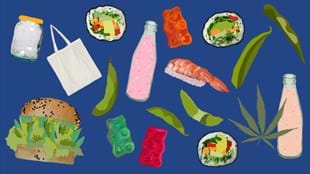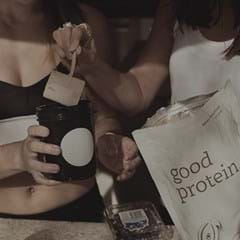You can tell when a food trend has gone truly mainstream – junk food jumps on the bandwagon.
We saw it last decade with gluten-free foods. Once, you could barely find gluten-free bread, now there’s everything from gluten-free chips to gluten-free chocolate chip cookies.
So it is now with ‘plant-based’ foods. As predicted here this time last year, plant-based eating has gone well and truly mainstream. Cue plant-based junk food galore – burgers, donuts and pies just for starters.
Where will we be this time next year? Here are four big trends I think we’ll have seen grow by the time 2021 rolls around.
Plant-based gets defined
Many take the term ‘plant-based’ to mean vegan, but in fact most health experts agree it can mean eating mostly plants, not totally plants. Given it is also widely agreed that this is a great way to eat for overall health, this year we should see plant-based coming to mean ‘plant predominant’ or ‘plant forward’ rather than ‘plant only’. And we should start to see plant-based food trending towards whole and natural foods, rather than highly processed ones. It’s already happening in the world of manufactured foods. According to consumer research firm Mintel, the number of food and drink products made in the United States that use ‘plant-based’ in their labeling spiked 287 percent between 2012 and 2018. Not all of these products are vegan, and the latest are working hard at being healthful as well as plant-full.
What it means for you: You’ll see more and better options in restaurants, cafes and shops that offer the benefits of plant-based eating without the junk. Look for whole foods, not just plant-only versions of regular processed foods.
Plastic-free shopping
Many countries have now banned the use of single-use plastic bags, removing billions of pieces of plastic from the global waste stream. As climate change and planetary health continue to be a priority, the next frontier will be buying and using less plastic in our packaging. United States company Loop is showing one way forward: it offers big-brand household products and foods in re-usable packaging that can be returned and re-filled. Amsterdam supermarket Ekoplaza has an aisle containing over 700 products completely free from plastic packaging; products are packaged in glass, metal, cardboard and compostable biofilm. And packaging designers are working hard on plastic alternatives: packaging made from shrimp shells, sugar cane, silk proteins or mushrooms.
What it means for you: If you’re not already, you’ll get into the habit of carrying a re-usable bag with you. It’s likely you’ll start consciously choosing less-packaged items when you shop, but even if you don’t, the trend will come to you as manufacturers embrace cradle-to-cradle packaging.
Japanese influence
Japan is hot right now, as a travel destination and a source of foodie inspiration. The Tokyo Olympics will see the world focus on Japan, which should fuel the rest of the world’s fondness for all things Japanese. In food, this has been bubbling away for some time – most of the world now snacks on sushi and embraces edamame. When it comes to healthy eating, there’s a lot we can learn from Japan. The country has one of the lowest rates of obesity in the world, and one of the longest life expectancies, possibly due to its government-mandated program known as Shokuiku: lifelong food education that starts at preschool and extends through the whole population and into old age. The sophisticated program aims to ensure all Japanese people have an understanding of the origin and healthfulness of their foods, and encourages such things as families eating together and the importance of breakfast.
What it means for you: You’ll probably eat more Japanese-inspired foods this year, from seaweed snacks to all things matcha. Japan is where many of today’s trendy foods originated (fermented foods and tofu). Two more to watch out for are natto (fermented soybeans) and konyaku (super-low carb, high-fiber noodles made from the konyaku plant).
Cannabis craze
In line with last year’s prediction, hemp has gone the mainstream way of plant-based foods (hemp chocolate, hemp meat pies and hemp chips). Also exploding is its sister product, CBD oil. The United States is leading the charge here, with CBD oil being legal in 30 states. This has led to CBD-infused everything, from gummy sweets to pink lemonade. It’s worth noting the research is not strong that CBD has the benefits being claimed, such as helping with sleep, anxiety and inflammation. But that doesn’t seem to be dampening down this trend.
What it means for you: You’ll see even more CBD-based products in everyday life. If you’re tempted, go for ones with other health benefits – fiber, say, or vitamins – and remember no supplement is a substitute for a basic healthy diet.
Niki Bezzant is a New Zealand-based food writer, editor and commentator. She is the founding editor (now editor-at-large) of Healthy Food Guide magazine, and is currently president of Food Writers New Zealand and a proud ambassador for the Garden to Table program which helps children learn how to grow, cook and share food. She is a member of the Council of Directors for the True Health Initiative, a global coalition of health professionals dedicated to sharing a science-based message of what we know for sure about lifestyle and health.
Illustration by Anieszka Banks.








